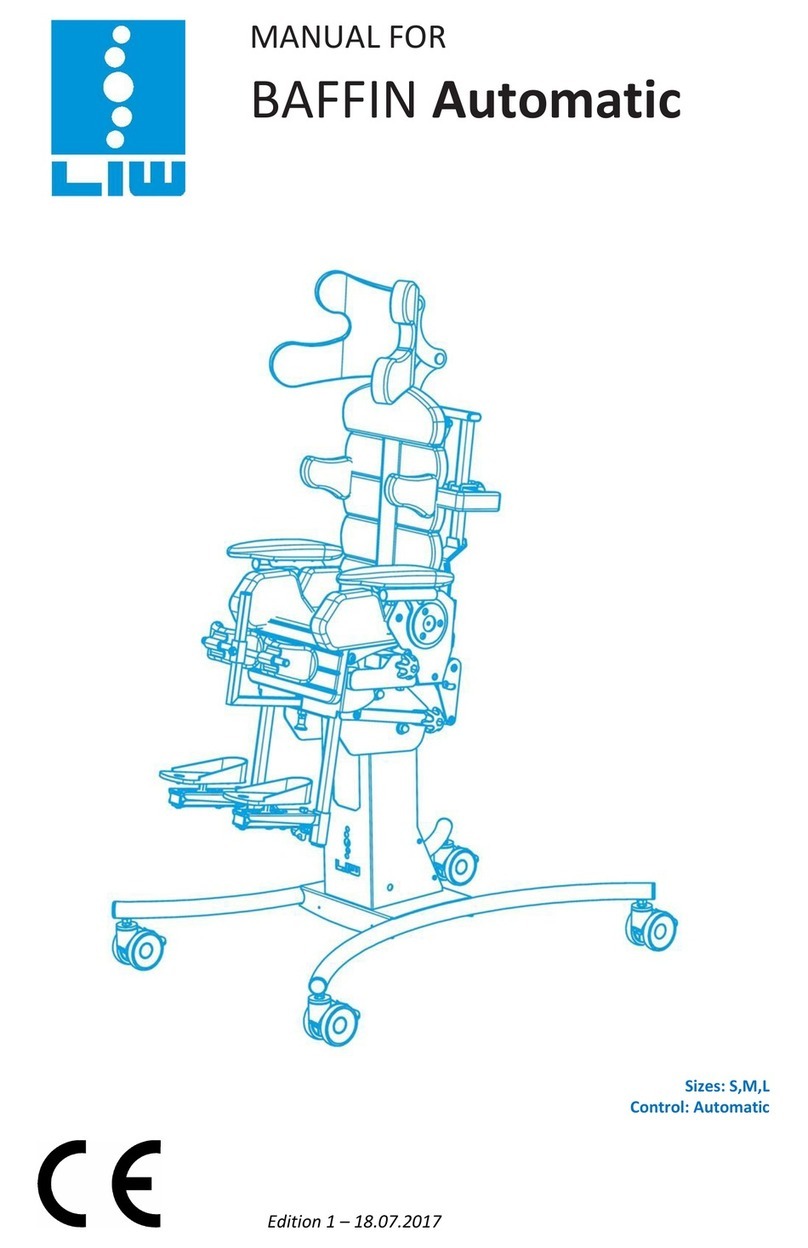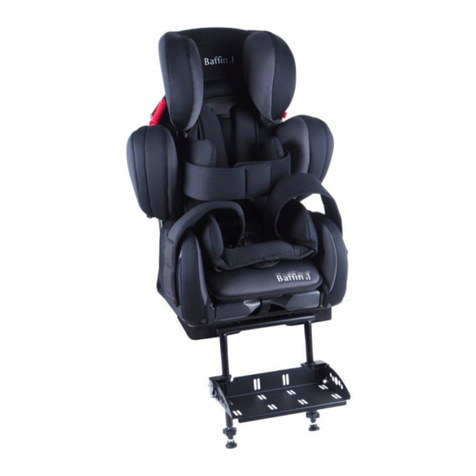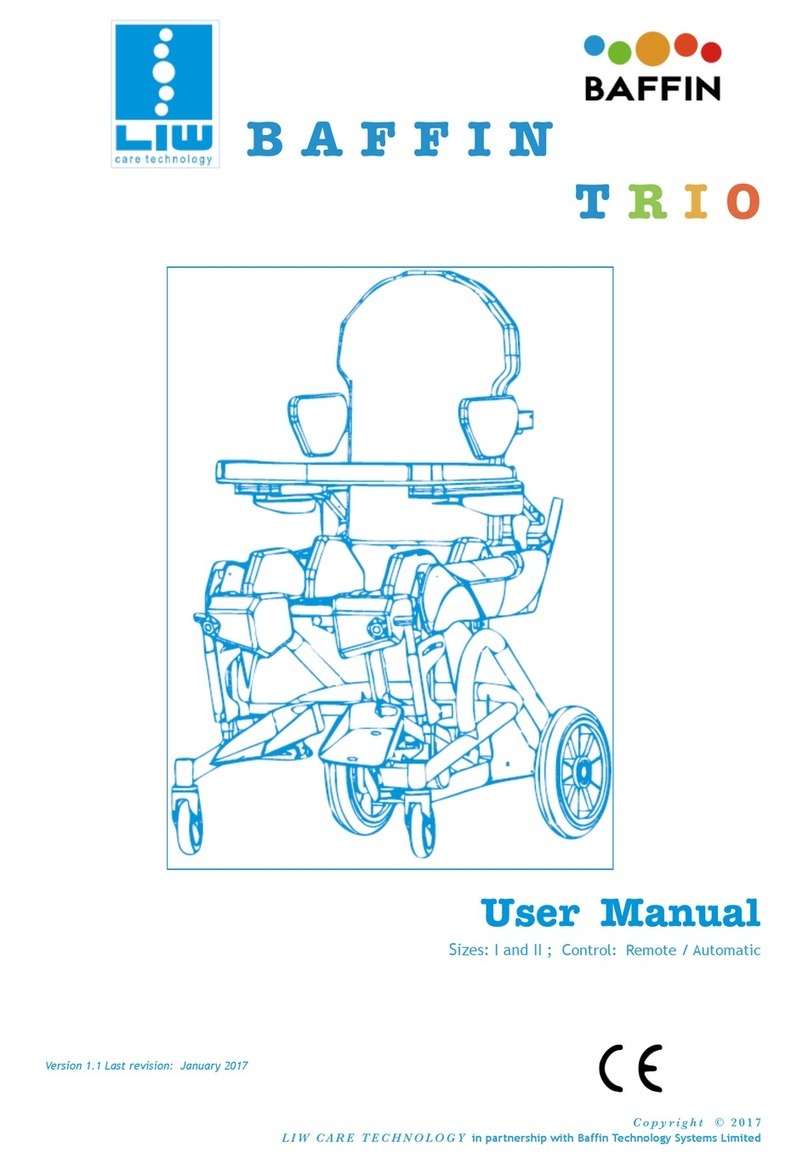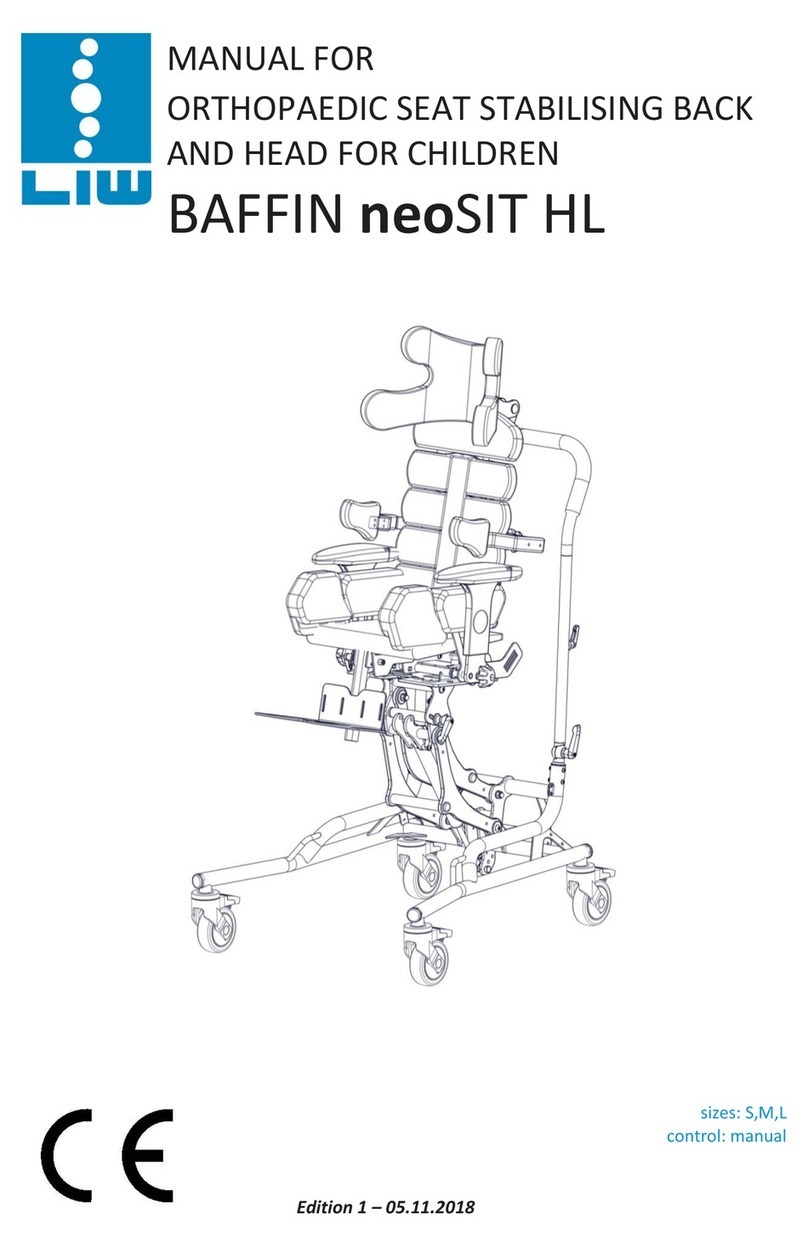LORI Stander edition 2 page 3
1. Introduction....................................................................................................................................................................... 3
General safety conditions........................................................................................................................................... 3
2. Identification of symbols.................................................................................................................................................... 4
3. Compliance with requirements concerning medical devices............................................................................................. 4
4. Indications for using the device ......................................................................................................................................... 4
5. Technical data.................................................................................................................................................................... 5
6. LORI Stander –design........................................................................................................................................................ 6
7. Detailed description of the construction and adjustments of the LORI Stander ............................................................... 7
Assembly of the stander............................................................................................................................................. 7
7.1.1. Disassembly of the frame..................................................................................................................................... 7
7.1.2. Installation of the column - Figures 4 and 5 ......................................................................................................... 7
Wheels –Figure 6 ....................................................................................................................................................... 8
Main Hip support –Figure 7 ....................................................................................................................................... 9
Lateral support –Figure 8......................................................................................................................................... 10
Adjustment of chest and hip supports –Figure 9..................................................................................................... 10
Chest strap –Figure 10............................................................................................................................................. 11
Knee pads –Figure 11............................................................................................................................................... 11
Foot platforms.......................................................................................................................................................... 12
7.8.1. Adjustment of height and tilt of foot platforms - Figure 12 ............................................................................... 12
7.8.2. Adjusting the spacing and inclination of the foot platforms .............................................................................. 12
7.8.3. Adjustment (front-back) and rotation of the foot platform - Figure 14 ............................................................. 13
7.8.4. Installation of platforms in forward and reverse vertical position ..................................................................... 13
Vertical position –Figure 16..................................................................................................................................... 14
8. Accessories....................................................................................................................................................................... 15
Table......................................................................................................................................................................... 15
8.1.1. Adjustment of the table tilt angle –Figure 17.................................................................................................... 15
Headrest –Figures 19 and 20 ................................................................................................................................... 16
Corrective hip strap - Figures 21 and 22................................................................................................................... 17
Shoulder protectors –Figure 23 ............................................................................................................................... 18
Fastened SideUP chest supports –Figure 24............................................................................................................ 18
9. Cleaning and maintenance .............................................................................................................................................. 19
Recommendations for cleaning and maintenance ................................................................................................... 19
Disinfection............................................................................................................................................................... 19
10. Nameplate ....................................................................................................................................................................... 20
11. Warranty/Service............................................................................................................................................................. 20
1. Introduction
The LORI Stander developed by LIW Care Technology Sp. z o.o. has been designed and patented to ensure an entirely new
quality in rehabilitation.
We have used our best efforts to make sure that the LORI Stander is as easy to use as possible. It is necessary to read the user
manual carefully prior to using the product. Following all instructions and recommendations included in this user manual will allow
you to avoid any situations which could damage the device, and you will also ensure the complete safety and comfort of use
throughout the whole period of using the product.
You will be able to fully use all the advantages offered by the product only when it is properly adjusted to the parameters of
the patient's body and the specific requirements of the patient.
General safety conditions
The biggest concern of LIW Care Technology Sp. z o.o. is to ensure safety for the patients using our devices. In order to provide
complete safety of the persons using the device, it is essential to strictly follow the recommendations stated below:
1. Before undertaking any attempts to use the device, please read the user manual thoroughly and in case of any doubts,
do not hesitate to contact the seller or the manufacturer.
2. Please make sure that all the information, recommendations and cautions included in these chapters are fully
comprehensible.
The user manuals attached to devices manufactured by LIW Care Technology Sp. z o.o. include paragraphs marked with the
word CAUTION, intended to emphasise the content of the given paragraph. The significance of the above-mentioned symbol is as
follows:
CAUTION!

































